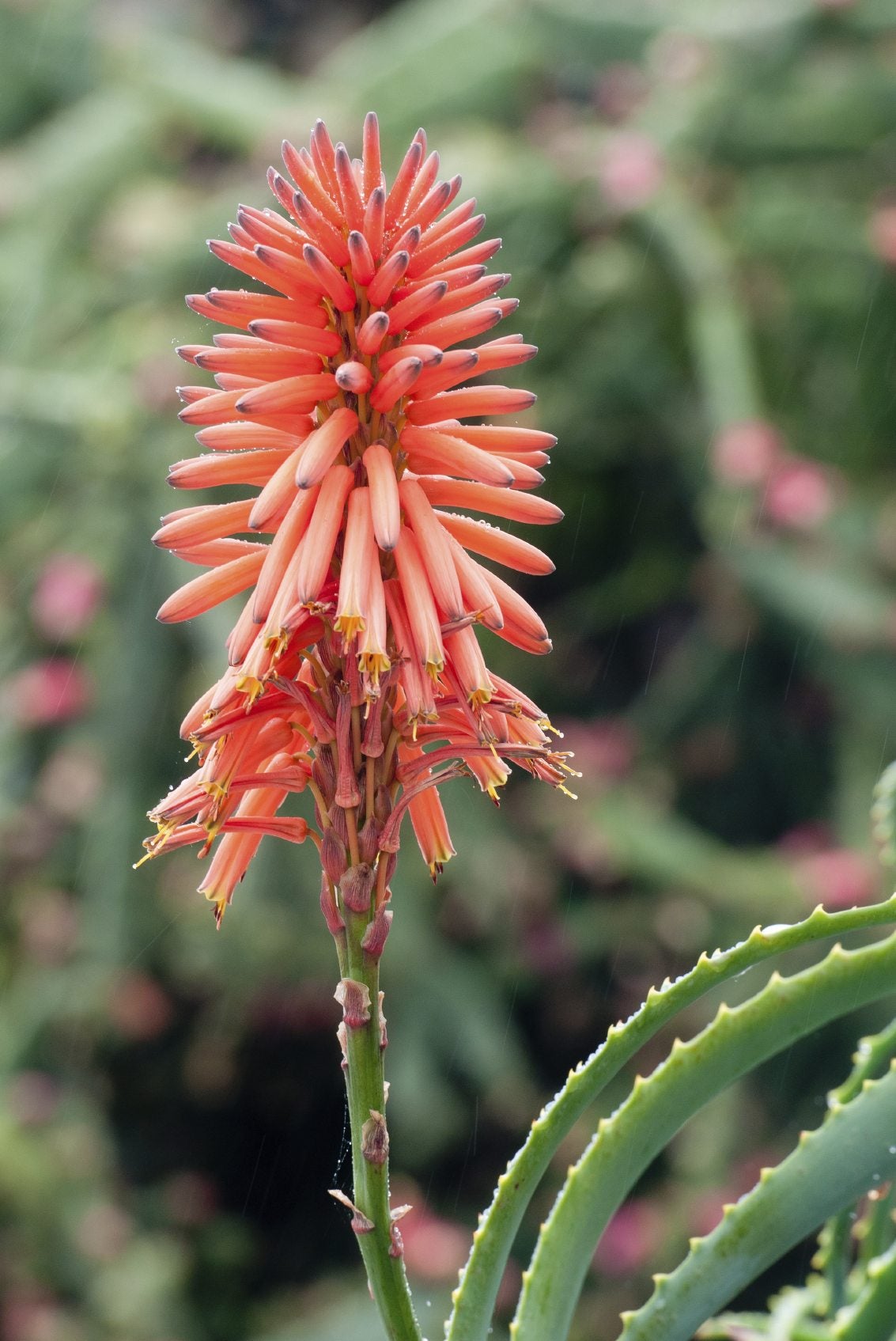Aloe vera, the succulent superstar of the plant world, is renowned for its myriad health benefits. From soothing sunburns to moisturizing skin, this versatile plant has earned its place in homes and gardens across the globe. But beyond its medicinal properties, aloe vera also boasts a stunning floral display that often surprises and delights its owners.
A Blooming Surprise
Unlike many succulents that remain leaf-bound for their entire lives, aloe vera plants can surprise you with a vibrant, colorful bloom. This occurs when the plant reaches maturity, typically after four to five years of growth. Once this milestone is reached, the plant’s energy shifts from vegetative growth to reproductive, triggering the development of a flower stalk.
The Anatomy of an Aloe Vera Flower
Aloe vera flowers are quite unique, showcasing an intricate structure that is both beautiful and functional. The flower stalk, or inflorescence, rises above the plant’s rosette of leaves. It is a tall, slender stem that branches out into multiple smaller stems, each topped with a cluster of tubular flowers. These flowers are often brightly colored, ranging from shades of yellow and orange to red and pink.
The Flowering Process

The flowering process in aloe vera is influenced by a combination of factors, including age, light exposure, and temperature. As the plant matures, it stores energy in its leaves, which is then used to fuel the development of the flower stalk. Adequate sunlight is essential for stimulating flowering, as it triggers the plant’s hormonal response. Additionally, cool night temperatures can help induce blooming, mimicking the plant’s natural growing conditions.
The Significance of Aloe Vera Flowers
While aloe vera flowers are primarily a visual treat, they do have a functional role in the plant’s reproductive cycle. The bright colors and sweet nectar of the flowers attract pollinators such as bees and butterflies, which aid in the transfer of pollen between plants. This process is crucial for the production of seeds and the continuation of the aloe vera species.
Cultivating Aloe Vera for Blooms
If you’re eager to witness the beauty of aloe vera flowers in your own home, there are a few tips to keep in mind. Firstly, ensure your plant is mature enough to bloom. Secondly, provide it with ample sunlight, ideally several hours of direct sunlight each day. Thirdly, maintain a consistent watering schedule, allowing the soil to dry out slightly between waterings.
Common Myths About Aloe Vera Flowers
Despite its popularity, there are a few common misconceptions about aloe vera flowers. One such myth is that aloe vera plants only bloom in their natural habitat. While it’s true that optimal growing conditions can encourage flowering, indoor plants can also bloom if provided with the right care. Another myth is that cutting the flower stalk will stimulate the plant to produce more flowers. In reality, removing the flower stalk will not affect the plant’s future blooming potential.
The Symbolism of Aloe Vera Flowers
In various cultures, aloe vera flowers carry symbolic meanings. In some cultures, they represent immortality and healing, reflecting the plant’s medicinal properties. In others, they symbolize good luck and prosperity, making them a popular choice for gifts and home decorations.
Aloe Vera Flowers in Traditional Medicine
Beyond their aesthetic appeal, aloe vera flowers have also been used in traditional medicine for centuries. Some cultures believe that the flowers possess healing properties similar to the plant’s gel. However, more research is needed to fully understand the potential benefits of aloe vera flowers.
Preserving Aloe Vera Flowers
To extend the life of your aloe vera flowers, consider cutting the flower stalk and placing it in a vase of water. This will allow you to enjoy the beauty of the blooms indoors. Additionally, you can try pressing the flowers to create dried flower arrangements.
Aloe Vera Flowers in Art and Design
The unique shape and vibrant colors of aloe vera flowers have inspired artists and designers alike. From paintings and sculptures to fabric patterns and jewelry, aloe vera flowers have been incorporated into various forms of art and design.
Aloe Vera Flowers in Your Home
Aloe vera flowers can add a touch of exotic beauty to your home. Whether displayed in a vase or used to create floral arrangements, they can brighten up any space.
Inspiring Creativity with Aloe Vera Flowers
Aloe vera flowers can spark creativity and inspire artistic expression. From painting and drawing to photography and poetry, there are endless possibilities for incorporating these beautiful blooms into your creative endeavors.
FAQ
A: Aloe vera plants typically bloom once a year, although the timing can vary depending on the specific variety and growing conditions.
A: While you can’t force a plant to bloom, you can create optimal conditions to encourage flowering. This includes providing adequate sunlight, proper watering, and a suitable temperature range.
A: Once the flowers have withered, you can simply cut the flower stalk at its base. This will prevent the plant from expending energy on seed production and redirect it towards leaf growth.
A: While the gel inside the leaves of aloe vera plants is generally safe for pets, ingesting the flowers may cause mild digestive upset. It’s best to keep your pets away from the plant to avoid any potential problems.
Aloe vera plants are not only valuable for their medicinal properties but also for their stunning floral displays. By understanding the factors that influence flowering and providing optimal care, you can encourage your aloe vera plant to bloom and add a touch of natural beauty to your home.





:max_bytes(150000):strip_icc()/star-of-bethlehem-plant-profile-4774326-hero-943e35e2dc3049b1b2baa110d5fa0e71.jpg?w=200&resize=200,112&ssl=1)
